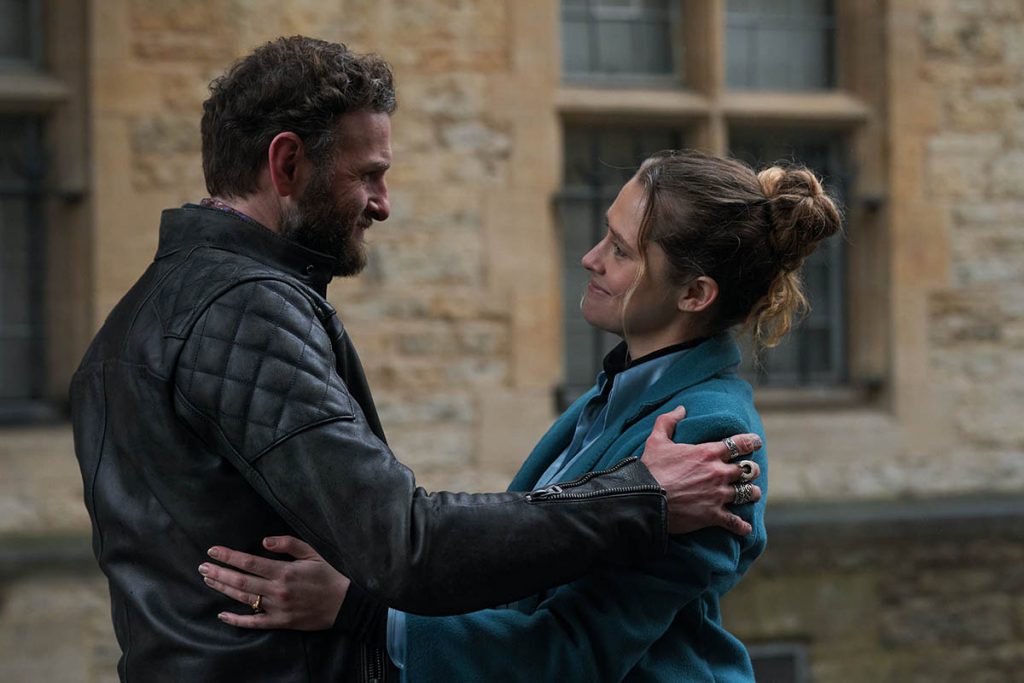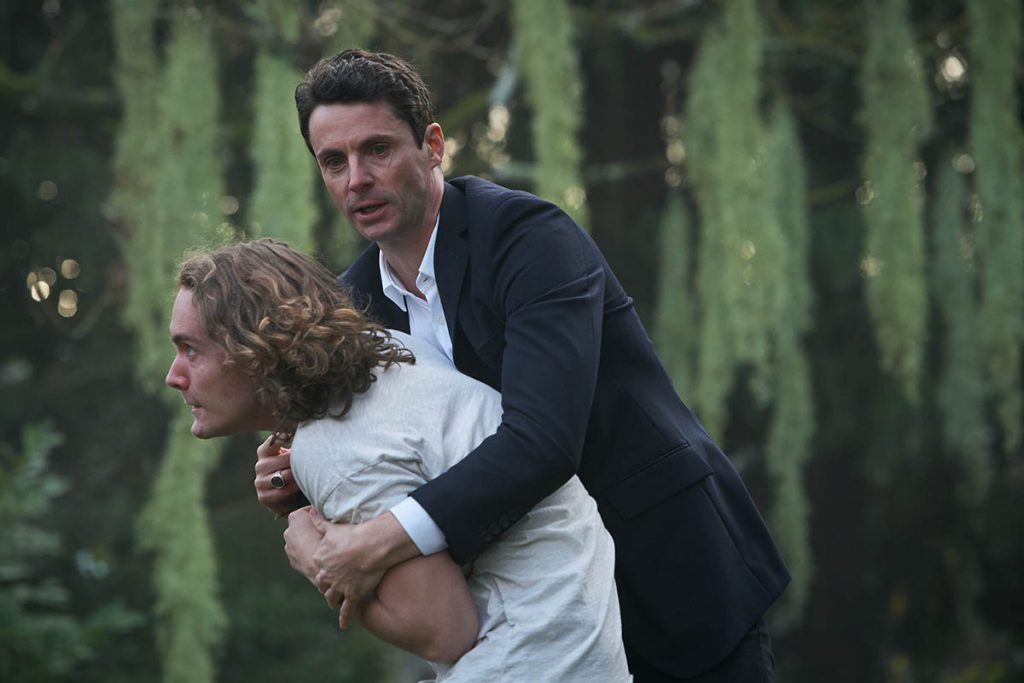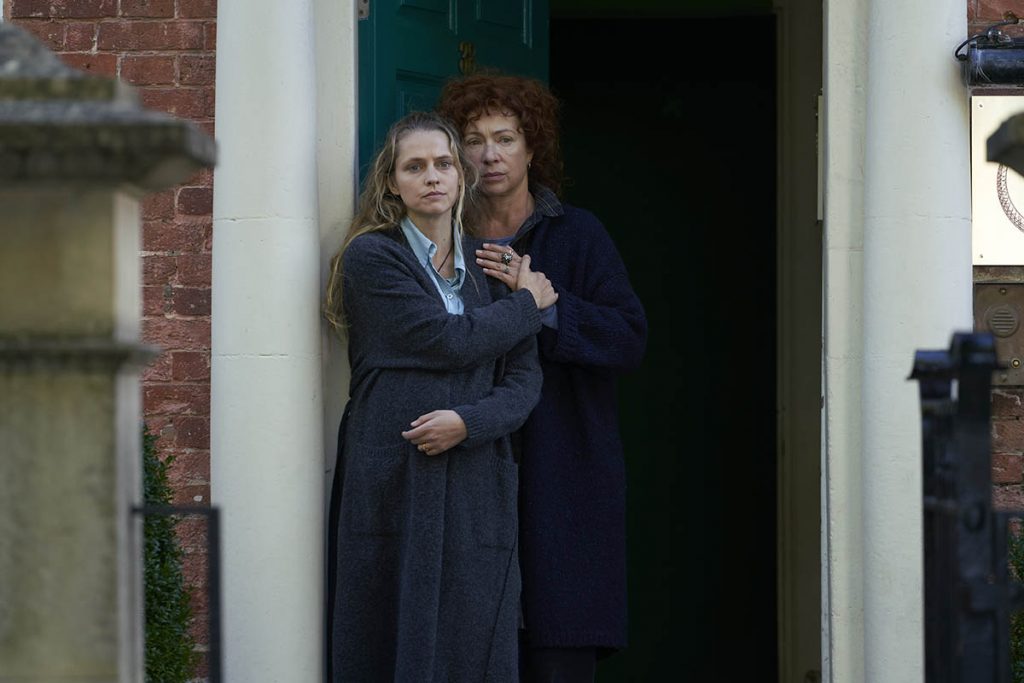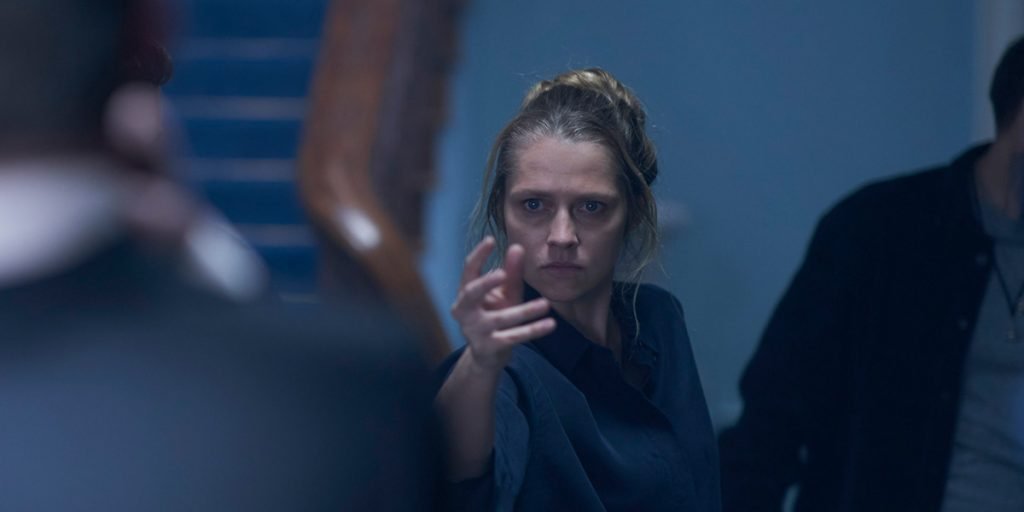In A Discovery of Witches‘ Season 3, Diana and Matthew return to their own time and deal with blood rage, congregation schemes, and the consequences of their own time travelling.
This review contains mild spoilers for episodes 1 & 2 of Season 3 of A Discovery of Witches.
A Discovery of Witches is back for its third and final season, and it brings us plenty of magical vibes and fascinating quests that are bound to satisfy fans of Deborah Harkness’s All Souls trilogy, upon which the series is based. With Season 3, Diana Bishop (Teresa Palmer, of The Place of No Words) and Matthew de Clairmont’s (Matthew Goode, of The Good Wife) story comes full circle, with plenty of life-defining choices, familiar returns, clever resolutions, and moments of growth for old and new characters in the series.
If Deborah Harkness’ trilogy stands out from other young adult novels, it’s because it’s grounded in reality: instead of just focusing on the supernatural elements of this tale, the author and series creator presented us with a heroine who might be a witch but who is first and foremost a historian, and a clever, resourceful young woman who is and remains her own person, no matter how many unlikely, worrying scenarios she has to face. If there’s one thing we’ve learned from the first two seasons of the show is that Diana doesn’t need to be rescued, and that she’s perfectly able to make her own decisions, even if they go against her stubborn vampire husband’s will, and to find her own place in the narrative even in the most unfamiliar of worlds (and times). Season 3 makes this even clearer, as Diana takes centre stage, showing us just how much she has grown – not only as a witch but also as a person, as a wife, and as a mother – and turns into the fierce, powerful weaver she was destined to become.
If Season 1 of A Discovery of Witches centred around Ashmole 782, a manuscript that is said to contain the secrets to the origins of all creatures and the many ways in which Diana is connected to it, Season 2 delved deeper into Matthew and Diana’s relationship, as they both timewalked back to 1590 to escape the anger of the congregation and found themselves in the company of resentful royals, inquisitive friends, and temperamental family members. But Season 2’s real highlight was Diana finally receiving proper training and learning to use her magic as a weaver – a creator of spells, and a powerful one at that. What we learned from Goody Alsop (Sheila Hancock), Diana’s 16th Century weaver teacher, is that Diana is the only known weaver who can stand between worlds, and tie the threads that bind our reality to magic in a way that can create and destruct. When Diana and Goody parted, the witch foretold that “old worlds will die and new will be born,” and that is exactly what happens in Season 3 – a series that marks a significant change of direction for A Discovery of Witches, as what’s at its core aren’t Ashmole 782 or even Matthew and Diana’s relationship, but Diana herself.
Which is both an advantage and a missed opportunity. If what had us hooked in Season 1 was uncovering the nature of Ashmole 782 and witnessing Diana and Matthew’s relationship blossom, and what kept our eyes glued to the screen in Season 2 was watching Diana use her powers to create stunning displays of magic and defeat her enemies, Season 3 opts for a slower pace in the first half of the series, where a lot less happens and most of it has little to do with our two protagonists falling in love. There’s more room for introspection and character growth, as well as a final episode that ties all loose ends together, but there are also several predictable twists, as well as a very speedy resolution and several interesting themes – such as the congregation’s attitude towards interspecies relationship as a metaphor for racial oppression and prejudice, as well as Gallowglass (Steven Cree) and Fernando’s (Olivier Huband) heartbreaking histories and desires – that could have been the highlight of the series but are only briefly touched upon or hinted at.

This probably has to do with the fact that there was a lot of ground to cover in this season, especially considering that it consists of only seven episodes, and that not only several mysteries had to be solved by the end of it, but that many new characters are also introduced, each with their own histories, motivations, and a role in the narrative that is just as important as that of the characters we already knew, who are also dealing with personal drama and unresolved issues.
When Diana and Matthew return to their own timeline, they find themselves in the aftermath of Peter Knox’s (Owen Teale) attack at Sept-Tours, which left Emily (Valarie Pettiford) on the verge of death and the entire extended family – vampires Isabeau (Lindsay Duncan), Marcus (Edward Bluemel) and Miriam (Aiysha Hart), witch Sarah (Alex Kingston), daemons Sophie (Aisling Loftus), Nathaniel (Daniel Ezra) and Hamish (Greg McHugh), and human Phoebe (Adelle Leonce) – in desperate need of a plan and with at least four very important quests to complete.
The first has to do with a mysterious vampire with blood rage on the loose, and our heroes’ need to find a way to cure a disease that might also affect Matthew and his family, not to mention his entire species, in the future. There’s the still missing Ashmole 782, which might decide to show up again if Diana can find all the missing pages, whose whereabouts are unknown. There’s the matter of Matthew and Diana’s time travelling and the consequences their actions had on their own time, as more than one character from 1590 makes an appearence in the series, from the couple’s now grown-up adopted son Jack (Toby Regbo, of Reign) to less friendly acquaintances and a particularly hostile foe. And then there’s the congregation, where Peter Knox, Satu (Malin Buska) and Gerbert (Trevor Eve) are all hellbent on blaming recent tragedies on Diana and Matthew’s Philippe-approved union, even more so now that Diana is pregnant with twins.
And so, Diana and Matthew spend more time apart than together, with Matthew, Marcus, Miriam and some unexpected allies searching for a cure for blood rage and trying to find the vampire serial killer who’s been on a murder spree in London, Diana looking for the missing pages of Ashmole 782 with the help of Sarah, Phoebe and new friends, and Agatha (Tanya Moodie) hoping to prevent the congregation from taking measurements against them. Our two protagonists reunite and then take different paths again throughout the series, all while dealing with the unexpected return of an old acquaintance, a witch with “the blood of the lion and the wolf,” a troubled adopted son of their own creation, and a mystery to solve on the origins of all creatures. And, while they do manage to take care of every single one of these issues by episode 6, what the journey feels like is a blend of The Vampire Diaries, Twilight, and X-Men. The blood rage issue is perhaps the weakest plot device in the entire series, as it’s hard not to be reminded of The Vampire Diaries‘ Stefan Salvatore and find similarities with his “ripper” problem, which led him to ruthlessly murder innocent victims because he couldn’t control himself, even more so as Matthew’s journey eventually takes him to New Orleans, which is also Stefan Salvatore’s hunting ground in Kevin Williamson’s show. Diana’s supersonic pregnancy draws parallels to Twilight, especially since the issue of which creatures the twins may turn out to be (and what they may need to feed on) is brought up several times – just like with Bella’s bloodthirsty vampire daughter in Twilight, but is then sidelined after the birth, when more urgent matters take over.

And then there’s the issue of the cure to blood rage, which, at some point, sees Matthew and Diana tell a bunch of human scholars about the existence of creatures, and enlist their help to study their own DNA. This is perhaps the biggest missed opportunity in Season 3, as the series begins to tackle the way different people react to what they don’t understand, turning fear into hatred, in a way that is somewhat reminiscent of the X-Men franchise, where mutants are used as a metaphor for everything that’s considered alien and different, and the “good mutants” choose to believe in peacefully coexistence with humans while the “bad mutants” declare war on their own kind.
This happens in A Discovery of Witches too, where the evil, sphere-holding Peter Knox uses his powers to try and eradicate his own kind out of fear of the unknown and thirst for power, while our heroes, Matthew and Diana, turn to science to bring peace to the universe, getting humans involved and sending across a message of acceptance. But while the first X-Men films managed to tackle the theme of evolution by fully embracing timely matters such as prejudice, oppression and bigotry, and making them the core of the narrative, A Discovery of Witches mainly uses them as a device to get Matthew and Diana the answers they seek on the nature of vampire, daemon, and witch DNA and the origins of creatures, missing the opportunity to add more depth to the series.
A couple plot twists are also not entirely unexpected, starting with the return of Diana and Matthew’s adopted son, Jack, who returns in Season 3 as a result of our protagonists’ actions on his past when he was a child in 1590. However, Jack’s presence brings new dynamics between Matthew and Diana, and gives them more depth as well as a reson to fight for. Thanks to Toby Regbo‘s committed performance, Jack is one of the most welcome character comebacks in Season 3, and it’s always a pleasure to watch him interact with his parents and the many people who attempt to manipulate him.
Another pleasant surprise of Season 3 is Gallowglass, a character who brings one of the most unexpected revelations of the series, aided by Steven Cree‘s incredible emotional depth in the very little screentime he’s given, making us wonder about his life between the 1590s and the present day and making us wish for a spin-off series of his own. Out of the characters we already knew, Sarah and Satu are given a lot of room to grow, and both Alex Kingston and Malin Buska are mesmerizing, the former breaking our hearts more than once and the latter terrifying us right till the very end. Due to some scheduling conflicts, Baldwin is no longer played by Trystan Gravelled in Season 3, but Peter McDonald rises to the occasion and ensures the character remains believable: Baldwin, too, grows a great deal in the series, and it’s thanks to McDonald that his character leaves a mark by the end.
But the real standout, here, is Teresa Palmer, who is simply phenomenal as Diana Bishop, imbuing her character with the right blend of anger and vulnerability and demanding our attention in every single scene she’s in. Season 3 is full of moments that involve Diana using her magic, something we’ve seen her struggle with in Season 1 and 2, and watching her attempt to complete all the knots of the spell she needs to defeat the congregation, and finding out what happens when she does, is very rewarding. But the scenes that really leave a mark are those of Diana simply being herself, and no magic is needed for her to convey the raw energy of a character who has changed and grown so much since episode 1, but who has also managed to stay true to herself throughout the entire series.

As for Matthew Goode, he’s unfortunately not given much room to shine in Season 3. If part of what made previous seasons so satisfying to watch was the romance between Matthew and Diana, Season 3 sidelines this element in favour of other twists and developments, and the result is that Goode and Palmer don’t really have much chemistry in this season. Not only that, but Matthew often comes across as rigid and even boring in Season 3, which marks a significant step backwards for the character, considering how much his relationship with Diana has enabled him to grow in Season 1 and 2. In fact, the most satisfying interactions to watch in Season 3 are those between Diana and other characters, like Sarah, Gallowglass, Jack, and even the evil Satu and the enigmatic Father Andrew (Paul Rhys), whose very few scenes in the series definitely leave a mark.
A Discovery of Witches‘ third and final season is a flawed season, but it was made with a specific demographic in mind, and, if you are part of that demographic, you’re still going to love it. Though Season 3 misses the opportunity to delve deeper into certain timely themes and fully develop all of its characters, it still manages to give us seven binge-worthy episodes full of stunning displays of magic and mysteries to solve, with a satisfying (if a little too neat) resolution that marks the beginning of a new era for our beloved protagonists. There’s a lot to be loved in A Discovery of Witches‘ Season 3, from the warmth of its performances to the universality of its themes.
A Discovery of Witches’ Season 3 premiered on 7-8 January 2022 on Sky and Now TV in select European countries, and on Sundance Now, Shudder & AMC+ in the US.

